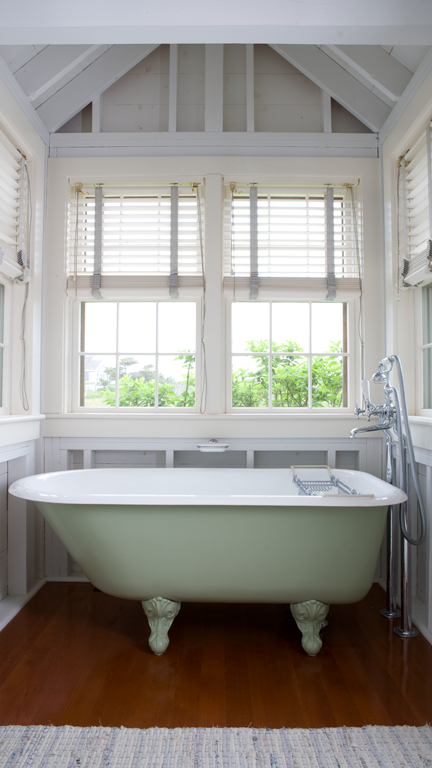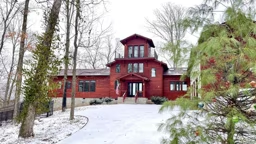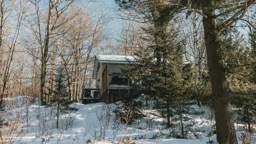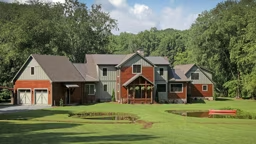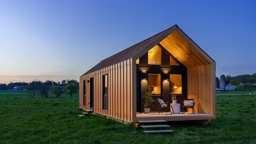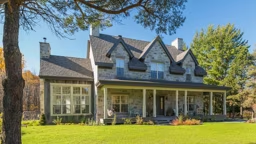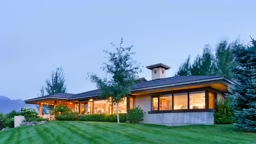Photos by Terry Pommett Photography
Renovating a beach cottage for someone who works in the hospitality industry and knows the myriad details that go into making people comfortable, might give an architect pause. But Lisa Botticelli of Botticelli & Pohl Architects in Nantucket, Mass., had already designed one house for Herb Rose and his wife, Anne, an artist, and she knew the three shared a similar vision: an appreciation for simple things done well
Anne and their three boys spent the summer in their four-bedroom vacation home in Nantucket (in town), with Herb joining them on weekends from their primary home in New York City. But once the Roses became empty nesters, they sought to downsize their retreat.
The couple found a classic Nantucket beach cottage on the ocean side – the surf side – of the island. The traditional 1950s uninsulated, two-bedroom rested on a part of the island with wide-open land and plenty of sky. In 2004, they called on Botticelli to make it comfortable year-round, while preserving the charm of the exposed beams on the inside and the brick fireplace in the master bedroom.
Small Done Right
Working small held big appeal for Lisa Botticelli.
“It’s rare that you get to do a little building like this for owners interested in doing it well,” Botticelli says. People might think that working on a large, grand house would be more rewarding for an architect, but she finds less opportunity in big projects to pay as much attention to detail. “With a building this small,” she says, “you can think about every square inch.”
The design had to pass muster with the Historic District Commission, which it did easily because the Roses stayed true to the original footprint. The couple was not interested in “making a statement” with the cottage, but they did want to be comfortable while enjoying its charm.
The Roses felt strongly about preserving the interior plank walls and exposed beams of rough-sawn lumber, wood that has not been planed down and is thicker than conventional “dressed” boards. Thus, rigid insulation had to be layered on the exterior and re-sheathed, and then the wood-shingle siding had to be put back on. (Note: Since, an energy code put into effect in Massachusetts no longer allows this technique, which only accommodates 4 inches of insulation.)
Natural materials factored into the renovation. Many homes today use medium-density fiberboard (MDF), an engineered product that can be grooved to mimic beadboard or a V-groove look. It is installed in sheets that don’t move or respond to moisture by expanding, contracting or cracking the way wood does. Many people consider that an advantage, but the Roses wanted the home to age naturally, so they used only wood in the renovation.
“The home celebrates the use of materials,” Botticelli says. She recommended fir for the floors, because it is a little soft. The Roses added a modern touch by using a high-gloss finish on the floors for a polished look. For the interior, including trims and moldings, she chose poplar, a wood with a very smooth grain that takes paint well. The entire interior – the walls, the vaulted ceilings, the exposed-brick fireplaces in the master bedroom and living room – was painted white. English-looking brass plumbing was also selected to fit the down-to-earth style.
True to Form
The Roses did not want the house to look brand-new when it was finished. They wanted it to fit in with the other understated, midcentury beach homes on that part of the island.
“We joked that we wanted the builder to put his worst carpenter on this job,” Botticelli says. “Seams that aren’t perfect add to the flavor of the architecture. Finding a builder who gets what you’re trying to do is key. You don’t want it to look cacophonous, but to look like it has aged gracefully.”
For the construction, the Roses hired a friend of the family, and communicated well with him. Herb Rose is quick to credit Botticelli for understanding and appreciating the quality of age.
“Lisa was very good at interpreting that popular cottage vernacular,” Herb says. “When you look in the cottage, it’s hard to believe that it is essentially a new house.”
Inside and Outside
The original cottage had a screen porch that the Roses converted to an uninsulated sunroom. They preserved the decking on the floor, then framed in large, screened windows that operate on pulleys to hinge open inside and hook to the ceiling. Depending on the direction of the prevailing wind, they can close the windows on one side to deflect a strong breeze while still enjoying the sense of being outdoors and being protected from the elements.
They finished by adding an extensive deck around the sunroom and on two sides of the house, and they broke up the deck into outdoor “rooms,” distinct areas for grilling, dining, sunning, and warming oneself by the outdoor fireplace they added.
Because the cottage is small, it takes in natural light from multiple directions. The Roses underscored the natural light by replacing the standard-size front and back doors with extra-wide models. The sight line from the front door extends all the way through the house and out to the ocean.
Lessons in Renovation
Though the finished cottage is exactly what the Roses wanted, Herb has learned some lessons that other homeowners might consider if upfitting a historic home.
“Divorce yourself from sentimentality,” Herb says. He recommends looking at the house objectively to see what of architectural merit should be saved. The hard truth is that sometimes it is most expedient and less expensive to tear downthe original home and rebuild from scratch.
Make sure you have a plan and a budget before the contractor lifts the first hammer. “Always get the builder to give you a set price, barring any change orders,” he says. “Expenses in a historic renovation can really run away from you.”
Finally, find out how much or even whether a home can be enlarged. Oftentimes, a historic home can’t have additions. “Little is charming,” he says, but sometimes you need to make an addition.
When family and other guests arrive, Herb says, “no one ever has more space than they need.”
Cabin Stats
Built: 1950s
Renovated: 2004–2005
Location: Nantucket, Mass.
Square feet before: About 1,000
Square feet after: About 1,116
Bedrooms: 2
Baths: 2
Architect: Botticelli & Pohl Architects, www.botticelliandpohl.com










